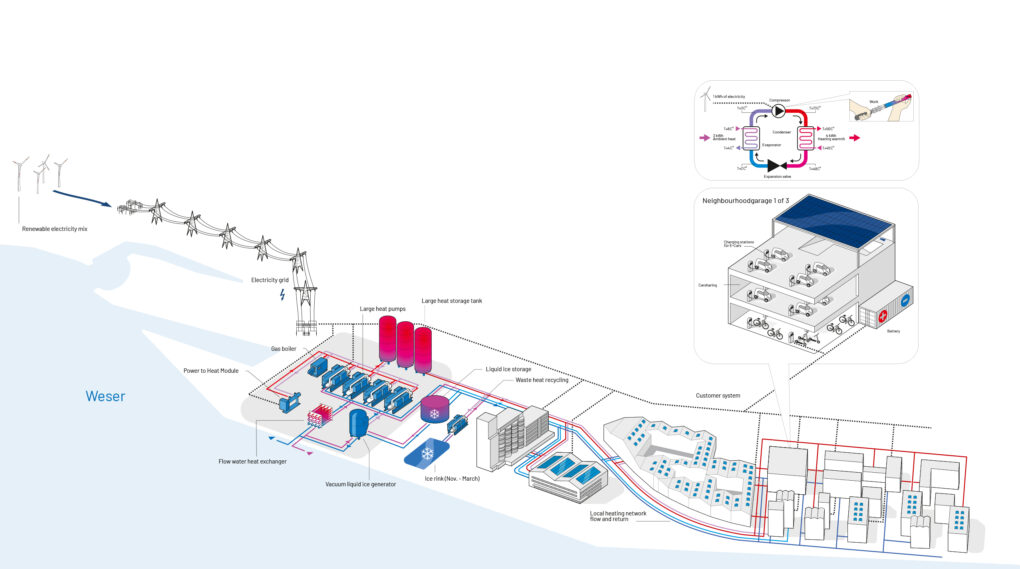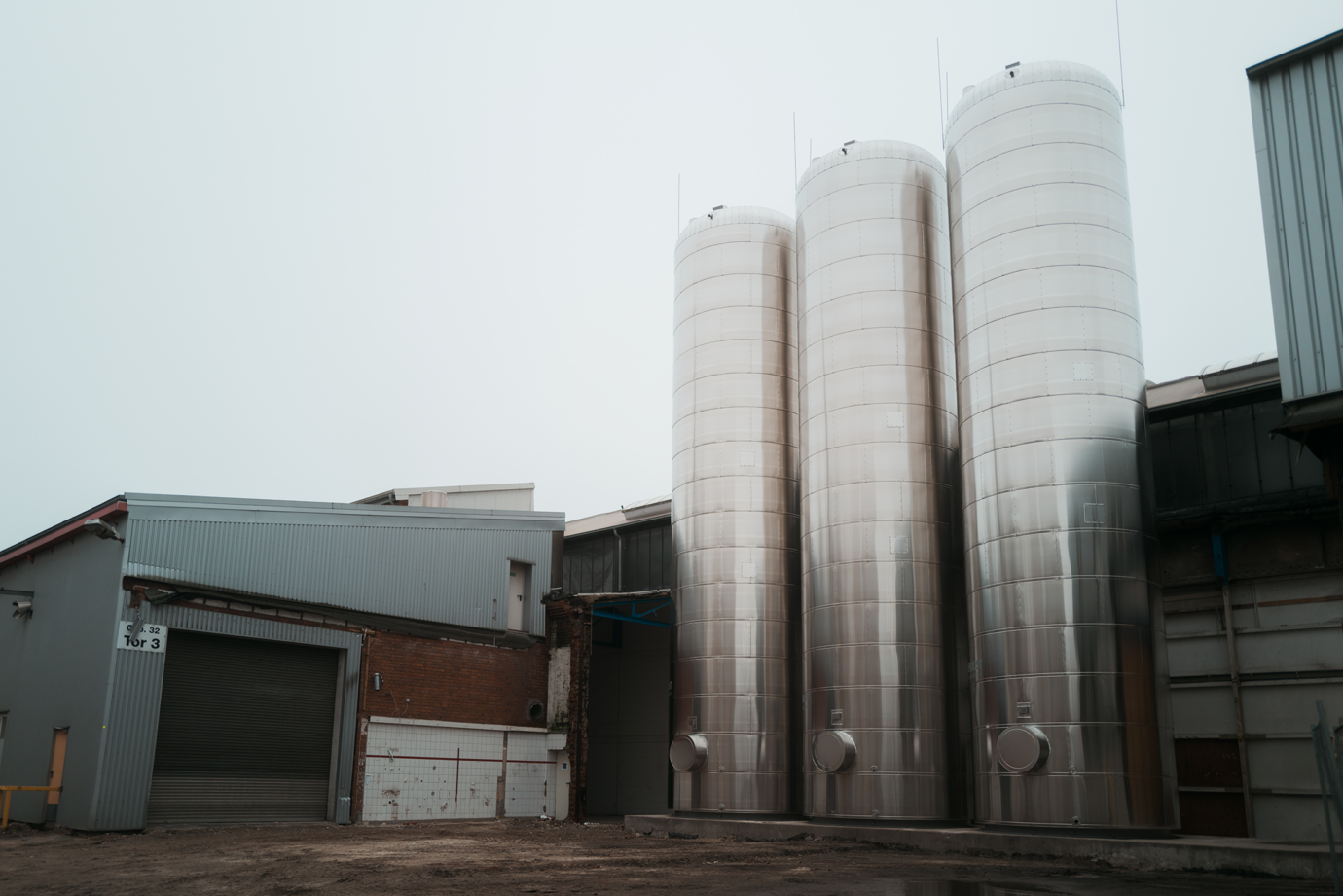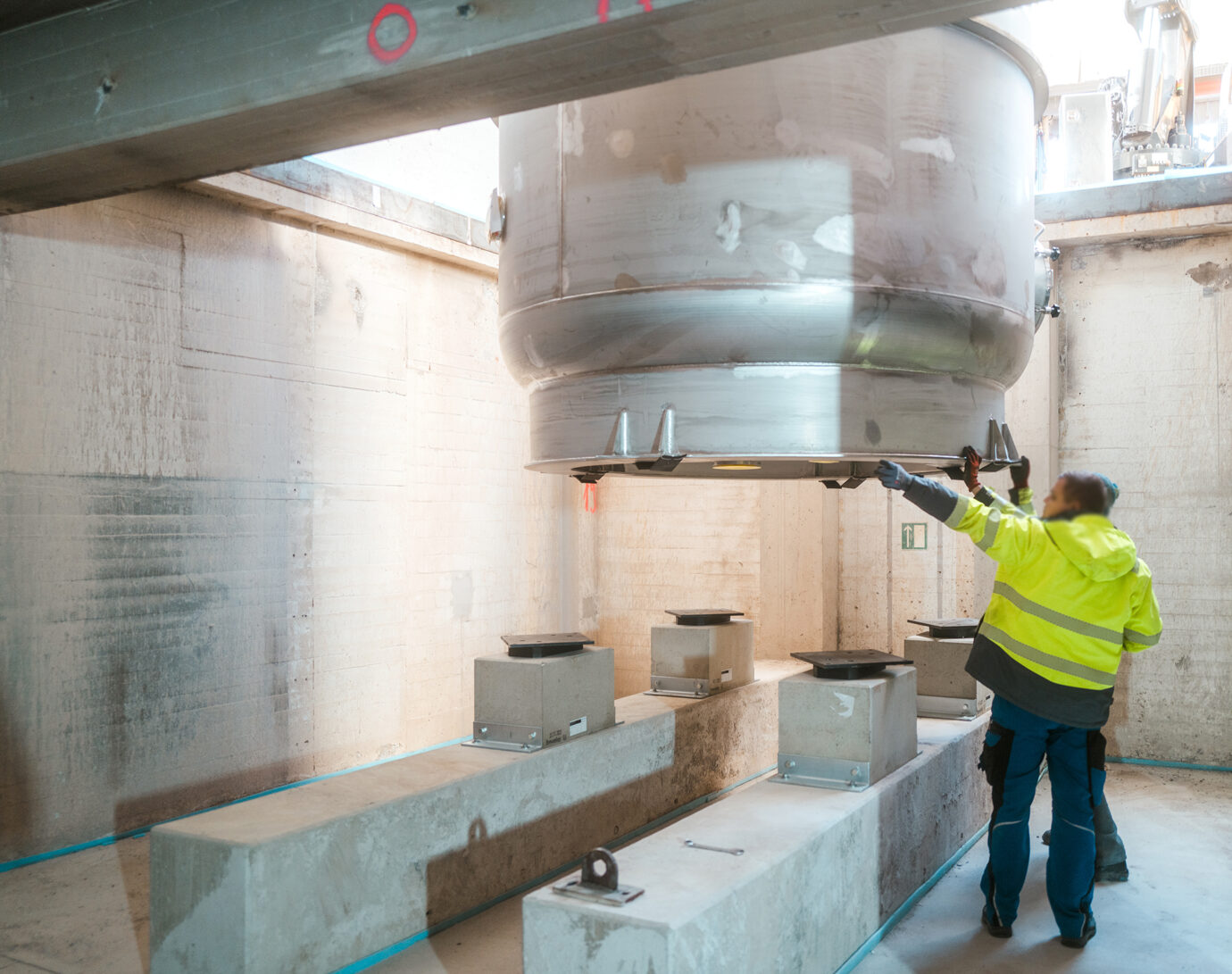In spring of 2025, we built what is probably the most innovative heating and cooling facility in Germany. It is located at denkmalstadt GmbH’s 16-hectare Überseequartier-site in Bremen, right on the banks of the river Weser.
We heat, cool, and move – using energy from the sun and the wind.We heat, cool, and move – using energy from the sun and the wind.With our location-specific concept, consisting of a 5 MW river water heat pump with a large heat storage tank, a power-to-heat module (1 MW), a vacuumised liquid ice generator, a surface cold water storage tank (in the form of an ice rink!) and a local heating and cooling network, we are setting new standards in sustainable energy supply for residential areas and neighbourhoods.

At the heart of this configuration lies our specifically developed system which matches supply and demand: It calculates a forecast of the heating and cooling demand in the neighbourhood and compares this with forecasts of the energy supply from PV electricity generated in the neighbourhood and the supply from the public grid. Our self-learning control system uses this data to calculate an optimal schedule for the large heat pumps. This means that, to the greatest possible extent, electricity is used and heat produced primarily when the wind blows and the sun shines. Generated heat is stored in 17-metre-high tanks and distributed to the buildings as needed via the local heating network.



Instead of spreading individual car traffic throughout the neighbourhood, we bundle it in dedicated mobility hubs. A power storage system in the form of a redox flow battery ensures that vehicles can be charged with solar power generated in the neighbourhood itself. Thanks to the storage facilities, this is even possible when the sun has gone down at the end of the day.
Source of HeatIcy River as a
Source of Heat
Harnessing heat from river water typically requires a minimum temperature of 4 °C to prevent freezing during the process. However, northern German rivers such as the Weser can fall below this threshold for up to 500 hours per year.
In a unique research project conducted in collaboration with ILK Dresden, we utilize river water with temperatures as low as 0.1 °C by evaporating it under vacuum conditions. This process not only enables the extraction of heat for a large-scale heat pump but also generates a pumpable ice slurry, which is safely returned to the river.
During summer, the vacuum-based ice slurry generator, together with a 150 m³ storage tank, enables efficient cooling of nearby buildings using electricity from solar PV.